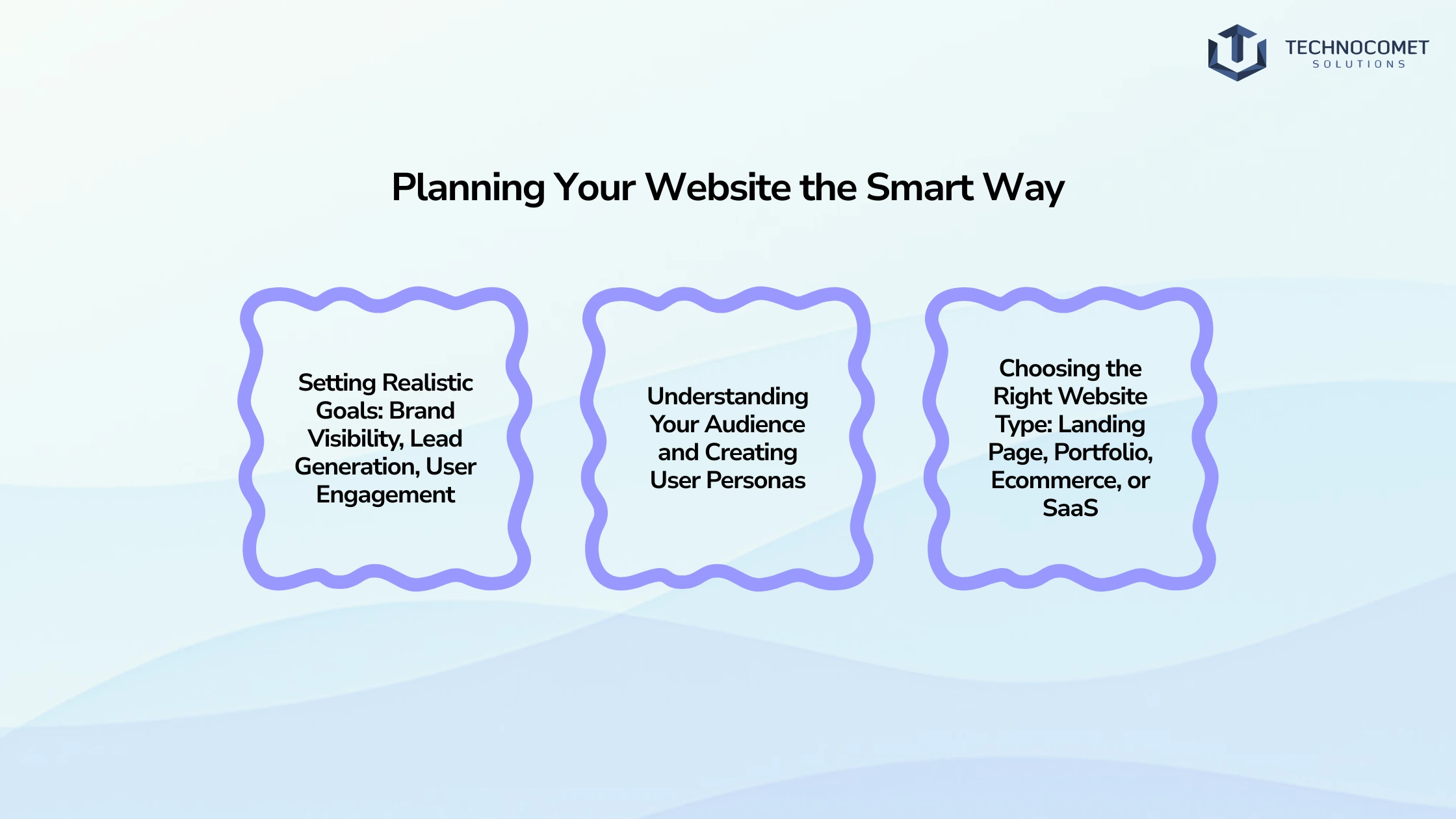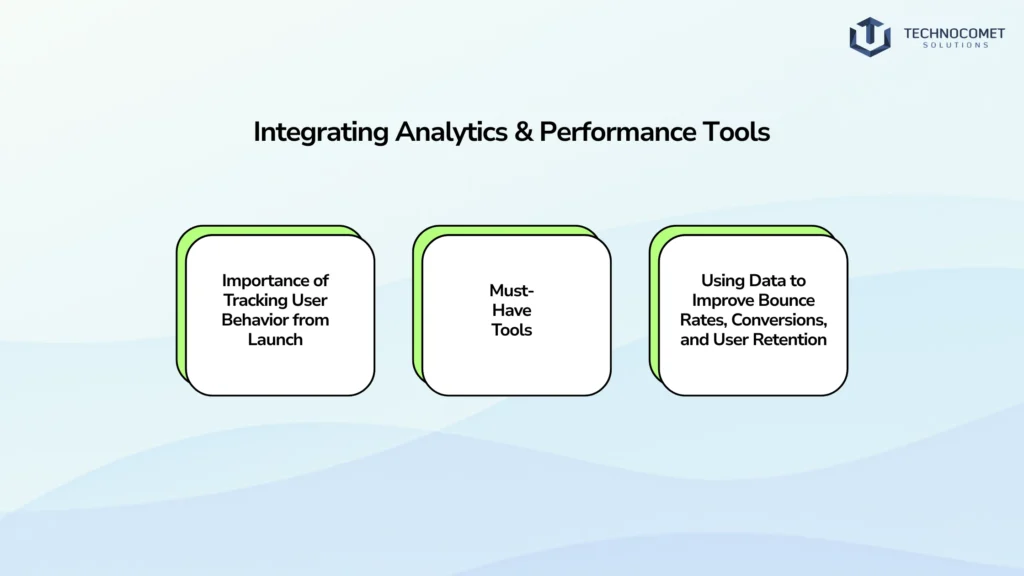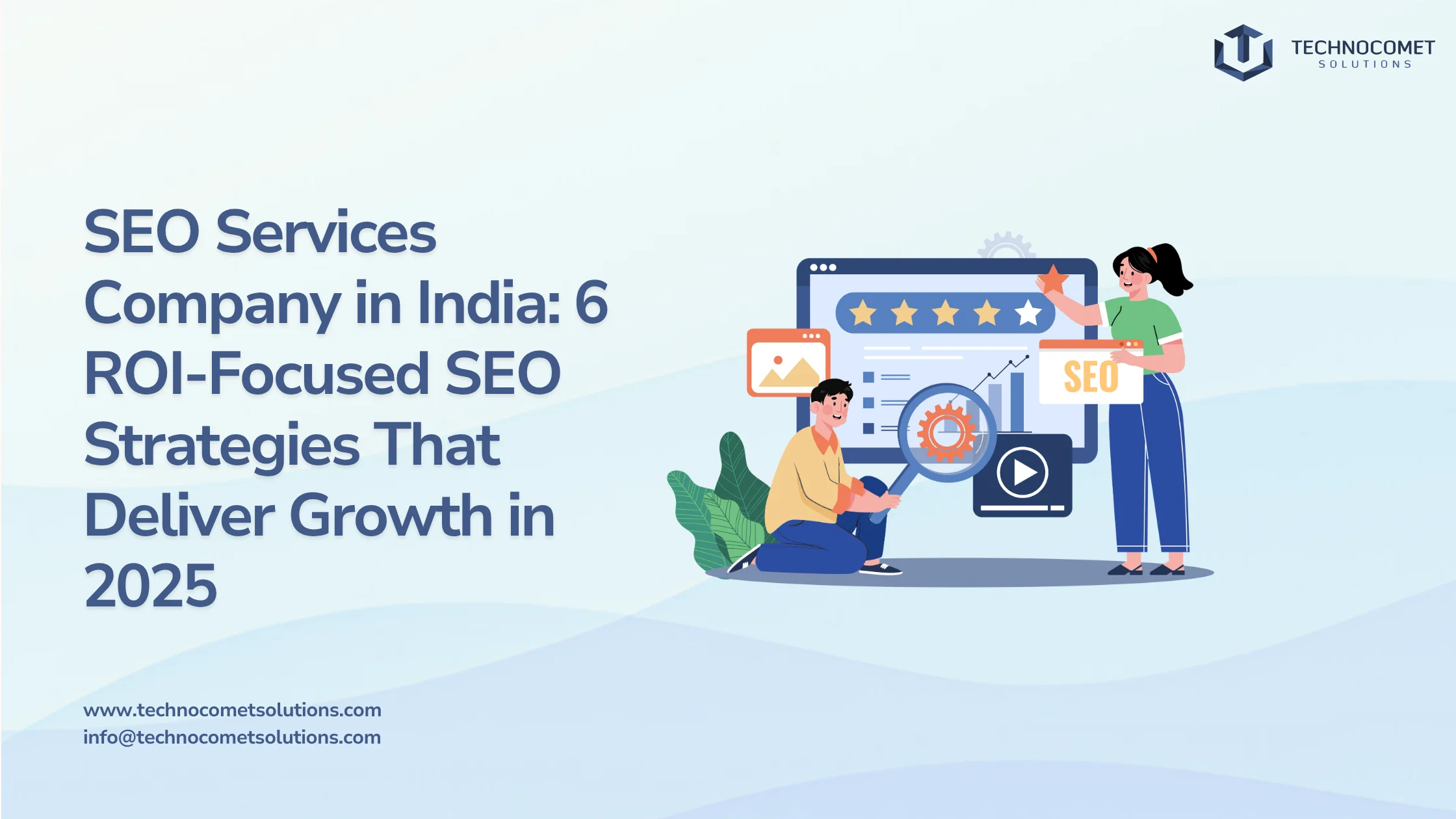Introduction
Have you ever wondered why some startups seem to skyrocket online while others struggle to get noticed? One of the biggest challenges new businesses face is getting their website right the first time. In the world of web development for startups, a poorly planned or executed website can cost you valuable customers and slow down your growth. We understand how overwhelming it can be to build a website that not only looks good but also performs well and scales with your business.
That’s why in this blog, we’ll explore how to approach web development for startups the smart way. You’ll learn how to set clear goals, choose the right technologies, design for your users, and build SEO and analytics into your site from day one. Whether you’re launching your very first website or looking to improve your current one, this guide will help you avoid common pitfalls and set your startup up for success.
So, let’s dive in and discover how you can launch your startup website confidently, efficiently, and with a strategy that works. By the end, you’ll have a clear roadmap to build a website that truly supports your business goals and grows alongside your vision. And if you need expert support along the way—TechnoComet Solutions is here to help you make your startup’s web development journey smooth and successful.
✅ Why the Right Web Development Strategy Can Make or Break a Startup
A strong web development strategy is foundational for any startup. The right approach ensures your website is not only visually appealing but also functional, scalable, and aligned with your business objectives. For startups, every resource counts. A misstep in your web development for startups—like choosing the wrong tech stack, neglecting SEO, or overlooking user experience—can lead to wasted time, budget overruns, and lost opportunities. On the flip side, a well-planned strategy can help you:
- Establish brand credibility and trust quickly
- Attract and convert your target audience
- Scale your product or service efficiently as your business grows
- Adapt to market feedback and pivot as needed
The stakes are high, but with the right approach to web development for startups, you set yourself up for success from the very beginning.
✅ The Challenges Startups Face When Building Their First Website
Building your first website as a startup comes with unique challenges:
- Limited budgets and tight timelines: Startups often need to launch fast and with limited resources, making efficiency crucial.
- Lack of in-house expertise: Many founders are not web developers or designers, and hiring the right talent can be daunting.
- Scope creep and feature bloat: There’s a temptation to add too many features, which can delay launch and complicate development.
- Scalability concerns: Your website needs to handle growth without requiring a complete overhaul.
- Technical debt: Rushed decisions or the wrong tech stack can lead to long-term maintenance headaches.
Overcoming these hurdles requires a clear understanding of web development for startups and a disciplined, focused approach.
✅ What This Guide Covers
In this comprehensive guide, you’ll learn the essentials of web development for startups, including:
- How to plan your website with clear goals and user personas
- Selecting the right tech stack and tools for your needs
- UX/UI best practices tailored for startups
- Building with SEO in mind from the start
- Integrating analytics and performance tools
- Launching your site confidently and managing post-launch improvements
Whether you’re a technical founder or new to web development for startups, this guide will equip you with actionable insights to launch right the first time.

✨ Planning Your Website the Smart Way
✅ Setting Realistic Goals: Brand Visibility, Lead Generation, User Engagement
The first step in web development for startups is defining what success looks like. What do you want your website to achieve in the next 3, 6, or 12 months? Common goals include:
- Brand visibility: Making your startup discoverable and memorable to your target audience.
- Lead generation: Capturing emails, sign-ups, or demo requests to build your customer base.
- User engagement: Encouraging visitors to interact with your content, share it, or return for more.
By setting clear, measurable goals, you can prioritize features and design elements that support your objectives. This focus is essential for web development for startups, where every feature should have a purpose.
✅ Understanding Your Audience and Creating User Personas
Knowing your audience is the backbone of effective web development for startups. Start by researching your target market:
- Conduct surveys or interviews to understand their needs, pain points, and preferences.
- Analyze competitors to see what works and what doesn’t.
- Create user personas—detailed profiles that represent your ideal customers.
User personas help guide design, content, and functionality decisions, ensuring your website resonates with real users, not just assumptions.
✅ Choosing the Right Website Type: Landing Page, Portfolio, Ecommerce, or SaaS
Different startups need different types of websites:
- Landing page: Ideal for pre-launch campaigns, MVPs, or single-product startups. Focuses on a clear call to action.
- Portfolio: Best for creative startups, agencies, or freelancers showcasing their work.
- Ecommerce: For startups selling products online, with integrated shopping carts and payment gateways.
- SaaS: For software startups needing user accounts, dashboards, and integrations.
Selecting the right type is crucial in web development for startups, as it directly impacts your site structure, content, and required features.
💡Pro Tip:
Start with a clear purpose and scale your features. Avoid feature bloat—focus on what delivers the most value to your users early on.
✨ Choosing the Right Tech Stack for Startups
✅ Frontend & Backend Options Ideal for MVPs
Your tech stack—the combination of technologies you use—shapes your website’s performance, scalability, and maintainability. For web development for startups, popular choices include:
- Frontend: HTML5, CSS3, JavaScript, React, Next.js, Vue.js. These technologies allow for fast, interactive, and responsive user interfaces.
- Backend: Node.js, Python (Django), Ruby (Rails), Java, or PHP (Laravel). Each has strengths; Node.js is popular for its speed and scalability, while Django offers rapid development.
- Database: PostgreSQL, MySQL, MongoDB, or Redis, depending on your data needs.
Choose technologies that your team is comfortable with or that are widely supported and documented.
✅ CMS vs Custom-Coded Websites: What Works Best for Lean Startups
- CMS (Content Management Systems): WordPress, Webflow, or Shopify are excellent for startups needing to launch quickly and manage content easily. They offer templates, plugins, and built-in SEO features.
- Custom-coded websites: Offer more flexibility and scalability, ideal for startups with unique requirements or those planning for significant growth.
For many startups, starting with a CMS and moving to custom code as you scale is a practical approach in web development for startups.
✅ Factors to Consider: Budget, Team Skills, Scalability
- Budget: Don’t overspend on unnecessary features or custom development early on.
- Team skills: Leverage your team’s strengths, or partner with agencies like TechnoComet Solutions for expert guidance.
- Scalability: Choose frameworks and tools that can grow with your business, minimizing future rework.
💡 Pro Tip:
Use scalable frameworks like React or Next.js to avoid tech debt and ensure smooth growth.
📌 TechnoComet Solutions helps startups pick and build with the best tech stack for long-term growth and performance.
✨ Prioritizing UX/UI in Web Development for Startups
Why Good Design Is More Than Aesthetics—It’s About Experience
In web development for startups, design is about more than just looks. It’s about creating a seamless, intuitive experience that guides users to your goals. Good UX/UI increases engagement, reduces bounce rates, and builds trust.
✅ Key Principles: Simplicity, Accessibility, Responsiveness
- Simplicity: Avoid clutter and information overload. Every element should serve a purpose, making navigation easy and intuitive.
- Accessibility: Design for everyone, including users with disabilities. Use clear headings, high-contrast colors, and ARIA labels to make your site usable by all.
- Responsiveness: Your site must work flawlessly on desktops, tablets, and smartphones. Responsive grids and layouts ensure a consistent experience across devices.
✅ The UX Design Process for Startups
- Define goals: Align UX objectives with business goals and user needs.
- Research: Conduct user interviews, surveys, and competitor analysis.
- Create personas and user journeys: Map out how users interact with your site and identify friction points.
- Sketch and wireframe: Visualize layouts and flows before building.
- Prototype and test: Use tools like Figma or InVision to create interactive prototypes and gather feedback.
- Implement and iterate: Work closely with developers and use analytics to refine your design post-launch.
✅ Tools for Prototyping and Wireframing
- Figma: Collaborative design and prototyping.
- Adobe XD: Wireframing and interactive prototypes.
- Sketch: Popular for Mac users.
💡 Pro Tip:
Design mobile-first. With most users on mobile, prioritize small screens for a seamless cross-device experience.
✨ Building with SEO in Mind from Day One
✅ Technical SEO Essentials: Site Speed, Mobile Optimization, Clean URLs
- Site speed: Fast-loading sites rank higher and reduce bounce rates. Use tools like Google PageSpeed Insights to optimize images, scripts, and server response times.
- Mobile optimization: With mobile-first indexing, your site must perform well on smartphones and tablets.
- Clean URLs: Use descriptive, keyword-rich URLs that are easy for users and search engines to understand.
✅ Why accessibility and convenience make voice a user favorite
- Site speed: Fast-loading sites rank higher and reduce bounce rates. Use tools like Google PageSpeed Insights to optimize images, scripts, and server response times.
- Mobile optimization: With mobile-first indexing, your site must perform well on smartphones and tablets.
- Clean URLs: Use descriptive, keyword-rich URLs that are easy for users and search engines to understand.
✅ Content SEO: Keyword-Rich Landing Pages, Blogs, Metadata
- Keyword research: Identify what your audience is searching for and naturally incorporate those terms into your content.
- Content planning: Map out blog posts, landing pages, and resources that address user needs and search intent.
- Metadata: Write compelling, unique meta titles and descriptions to improve click-through rates.
✅ SEO Tools for Startups
- Google Search Console: Monitor indexing, search performance, and fix issues.
- Yoast SEO: Optimize content on WordPress sites.
- SEMrush: Advanced keyword research and competitor analysis.
💡 Pro Tip:
Developers and marketers must collaborate. SEO should be integrated into web development for startups from the start, not added as an afterthought.

✨ Integrating Analytics & Performance Tools
✅ Importance of Tracking User Behavior from Launch
Data-driven decisions are essential in web development for startups. Tracking user behavior helps you understand what’s working and what needs improvement.
✅ Must-Have Tools
- Google Analytics: Track traffic, user behavior, and conversion funnels.
- Hotjar: Visualize user interactions with heatmaps and session recordings.
- Google Tag Manager (GTM): Manage tracking scripts without code changes.
✅ Using Data to Improve Bounce Rates, Conversions, and User Retention
- Analyze which pages users visit most and where they drop off.
- Test different headlines, images, or calls-to-action to see what increases conversions.
- Use retention data to refine your onboarding or content strategy.
💡 Pro Tip:
Set clear KPIs before launch—such as sign-ups, downloads, or demo requests—so you measure what matters, not just vanity metrics.
✨ Launching Your Startup Website with Confidence
✅ Pre-Launch Checklist: Speed Tests, Mobile Tests, SEO Checks, Security
Before going live, ensure your web development for startups covers all critical bases:
- Speed tests: Use Google PageSpeed Insights to ensure fast load times.
- Mobile tests: Check responsiveness on multiple devices and browsers.
- SEO checks: Verify meta tags, sitemaps, and structured data are in place.
- Security: Set up SSL, secure admin panels, and regular backups.
✅ Going Live: DNS Settings, Hosting Setup, CDN Integration
- DNS settings: Point your domain to the correct hosting provider.
- Hosting setup: Choose a reliable host with good uptime and support.
- CDN integration: Use a content delivery network to speed up global access and reduce latency.
✅ Post-Launch Strategy: Collecting Feedback, Fixing Bugs, Iterative Updates
- Collect feedback: Use surveys, chatbots, or direct outreach to gather user insights.
- Fix bugs: Monitor error logs and user reports to address issues quickly.
- Iterative updates: Continuously improve your site based on analytics and feedback—web development for startups is an ongoing process.
💡 Pro Tip:
Launch is just the beginning. Real growth happens with continuous improvement and adaptation.
📌 With TechnoComet Solutions, your startup launch is in safe hands. We ensure everything is set for success—from dev to deployment.
Conclusion
A successful startup website is more than just a digital storefront—it’s the foundation of your brand’s online identity and a critical driver of growth. By investing in thoughtful web development for startups, you ensure your site is not only visually appealing but also user-friendly, scalable, and aligned with your business goals. Every decision, from planning and tech stack selection to UX design and SEO integration play a pivotal role in how your audience perceives and interacts with your business.
Launching your website is just the beginning of your startup’s journey. The real work happens post-launch, as you gather feedback, analyze user behavior, and iterate on your product to better serve your customers. Embracing a lean, data-driven approach allows you to adapt quickly, avoid costly mistakes, and continuously improve your offering. Remember, web development for startups is an ongoing process—success comes from staying agile and focused on delivering real value to your users.
If you’re ready to take your startup to the next level, TechnoComet Solutions is here to help. Our team specializes in web development for startups, guiding you from the earliest planning stages through launch and beyond. With our expertise, you can build a website that not only looks great but also drives results and scales with your ambitions.
Reach out to TechnoComet Solutions today! 🚀💡📌
FAQs
Web development for startups refers to building web-based platforms or applications tailored to the unique needs of new businesses. It’s crucial because a well-developed website serves as the foundation for user engagement, product delivery, and business growth, helping startups quickly validate ideas and adapt to market demands.
Selecting the right tech stack depends on your business goals, team expertise, scalability needs, and budget. Popular choices for startups include Vue.js or React for the frontend, Laravel or Node.js for the backend, and scalable cloud hosting like AWS or DigitalOcean. The best stack is one that aligns with your team’s skills and future growth plans.
The web development process for startups typically includes clarifying goals and requirements, selecting the right tech stack, designing a user-friendly experience, developing a Minimum Viable Product (MVP), and iterating based on user feedback. This approach ensures a lean launch and allows for rapid improvements.
Focus on clarity, simplicity, consistency, and responsiveness. Plan your site’s structure, create wireframes, and use ready-made templates if resources are limited. Prioritize fast load times and mobile responsiveness to keep users engaged and satisfied.
Startups should consider platform selection, reliable hosting, security measures (like SSL and regular updates), and performance optimization (such as image compression and CDN usage). These factors ensure your website is accessible, secure, and scalable as your business grows.







